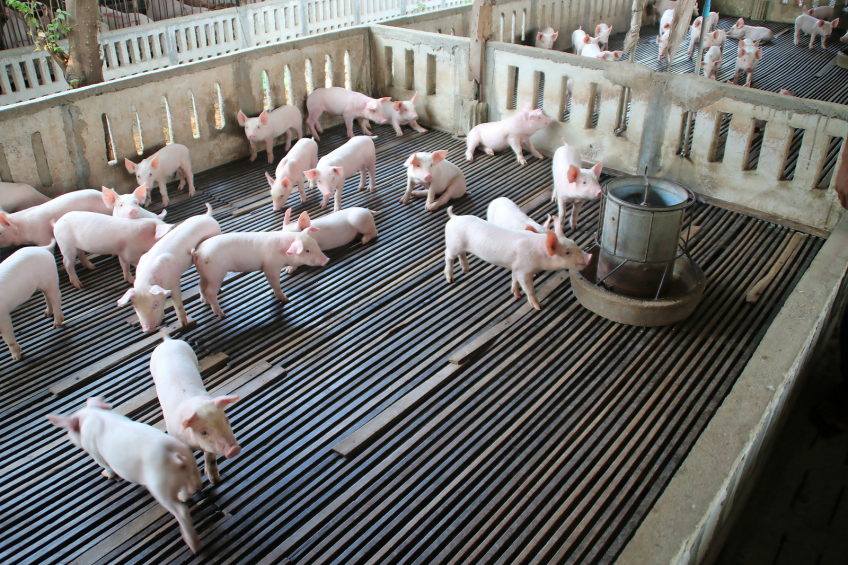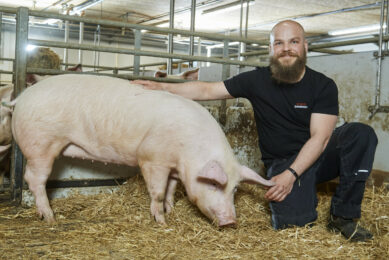Pig farming in Cambodia

When visiting pig farms each facility turns out to have its own characteristics. Cambodia’s Chorn Heng unit combines pig farming with a furniture factory – with wooden elements even being used on-farm.
Cambodia has a chequered past historically but has now stabilised. With a population of 15 million, the country is small by Asian standards and is sandwiched between Thailand to the west, Vietnam to the east and Laos to the north.
Cambodia’s pig industry is also relatively small, in the region of 200,000 sows. There are of course many backyard producers but there are an increasing number of large commercially run enterprises. With a shared border with Thailand it’s hardly surprising that Charoen Pokphand Foods (CPF) has feed mills and pig units in the country. Betagro, the second largest integrator in Thailand also has business interests in Cambodia, with both companies importing breeding stock from across the border.
Pigs are often cheaper both in Vietnam and Thailand and so the Cambodian government imports live pigs to provide cheap pork for the consumer. One disgruntled Cambodian producer commented: “The Cambodian government is supporting Thai and Vietnamese producers, not ours. These pigs can also bring in disease.”
Villages have engulfed Cambodian pig farms
In Asia many of the pig farms started off by being relatively isolated, outside of villages, but as the villages expanded the pig units effectively became urbanised, surrounded by houses and small roadside businesses. Hence it’s not unusual to pass a row of houses or even small factories to get to a pig farm, but a pig unit being literally part of a furniture factory is nothing short of unique.
Chorn Heng, Cambodia
Chorn Heng is a farrow-to-finish farm, having about 700 sows and gilts. The farm is located in Kampong Svay commune, in Kandal province. It reaches an average of 23 piglets per sow per year, with an average of 2.3 litters per sow per year. Post-weaning mortality is low at about 1.0%.
Craftsmen hand carving beautiful hardwood doors is what one can expect, however, when visiting Chorn Heng pig unit. This 700-sow farm is situated in Kampong Svay commune, in Kandal province, at around 20 km southeast of the country’s capital Phnom Penh. The farm’s owners chose to remain anonymous in this article.
Given the links to the furniture business it’s hardly surprising that a lot of wood is used on the farm. Whilst many of the weaner pens have plastic slats, in some of the pens the slats are made of hardwood, plus many of the pen divisions are also wooden. Offset against the cost savings, however, wood is very hard to disinfect and harbours disease.
Also the fences between the pens are sometimes made of wood.
Chorn Heng produces 23 pigs per sow
The farm is cared for by a staff of 10 men, with the progeny being taken to slaughter at 110 kg. Finisher pigs are sold to a middleman who in turn sells the pigs on to the slaughterhouses, which in turn supply the butchers who sell fresh or wet pork.
The unit is currently producing 23 pigs per sow per year. This compares well with the top units in Cambodia which are achieving 25-26 per sow per year.
The pig unit is typically Asian, with high raised ridges on the buildings and high sides to aid air flow. Fans help keep the air moving and cool the pigs, to a limited degree.
The risk of airborne infection is relatively low as the nearest other pigs are 5 km away. Even so an extensive vaccination programme is in place, with breeding pigs being vaccinated against Aujeszky’s Disease (pseudorabies), PRRS, PCV2, Classical Swine Fever (CSF) and Foot-and-Mouth Disease (FMD). The progeny, in turn, are being vaccinated against mycoplasma and PCV2.
Sow and boar breeding material used on farm
Landrace and Yorkshire grand parent (GP) sows are imported from Thailand along with Duroc and Piétrain boars. FI Landrace/Yorkshire females are bred from the GPs and then inseminated with either Duroc or Piétrain semen to produce the slaughter generation. Duroc crossbreeds are preferred as they have more lean meat than the offspring containing Piétrain genes.
The farrowing houses are fully slatted and creep lamps are in operation despite the high ambient temperatures that are typical in Cambodia.
The farrowing houses are fully slatted and creep lamps are in operation despite the high ambient temperatures that are typical in Cambodia. As the farrowing pens are fully slatted, old sacks are placed under the creep lamp to provide a laying area and a comfort zone for the piglets just after birth. Even with creep lamps pre-weaning mortality increases in December as a result of cold winds blowing south from China.
Sows are farrowed on a weekly basis with piglets being dunked in litter conditioner (Mistral, Olmix) straight after birth, to dry them up, to avoid chilling and to aid rapid intake of colostrum. Getting feed into milking sows is always a problem in hot climates and so sows are fed three times per day, in the morning, at mid-day and then in the evening.
Weaning takes place at 24 days, with the weaned sows and gilts being moved to conventional gestation stalls, typical housing accommodation in Asia for this category of breeding pig. Sows are then inseminated twice, at 5 am and 5 pm, using semen collected from the on-farm boar stud. Sows are not scanned to check if being gestating – visual confirmation seems to work quite well on the unit.
The farm’s approach to piglets
After birth, piglets are notched with a week number and receive a 2 ml iron injection. Tail docking and castration is carried out at seven days of age. Pre-weaning mortality is at 5%, despite staff not being on duty during the night. Nutrifeed booster creep feed, which is bought in, is fed from three to four days.
Incidentally all the feed apart from this specialist creep product is mixed in the farm’s large mill and mix plant. Feed is in meal form as on farm pelleting is an expensive operation.
The farm adds M-Tox+ (Olmix) to the home mixed rations in order to combat the mycotoxin problem, which is a big issue in Cambodia due to the hot climate.
The finisher pigs at Chorn Heng are housed on solid floors, in unbedded pens.
Piglets at weaning get transferred to the weaner accommodation. Zinc is added to the post-weaner feed in the form of zinc oxide and at a rate of 2,000 ppm. Keeping mortality low after weaning is inevitably difficult, but the Chorn Heng unit manages well by reaching an average of 1% death rate from four to eight weeks post-weaning.
The finishers are housed on solid floors, in unbedded pens. Pigs have access to feed at all times, provided in rectangular ad lib feeders. The pens are washed down regularly with manure ending up being flushed away into holding tanks.
The pig unit plans to expand
The pig unit was started 10 years ago with just one pig ‘and gradually expanded’. There are plans to build a new 1,500 sow unit. Once that is being built, the furniture business will be sold. After all, pigs are more profitable than making doors.
Travel around the world from pig farm to pig farm with Pig Progress as your guide. Click on your desired destination and sit back and enjoy the journey.
Thanks to Dr Ra Sovannara, Olmix Cambodia, for making this visit possible.











